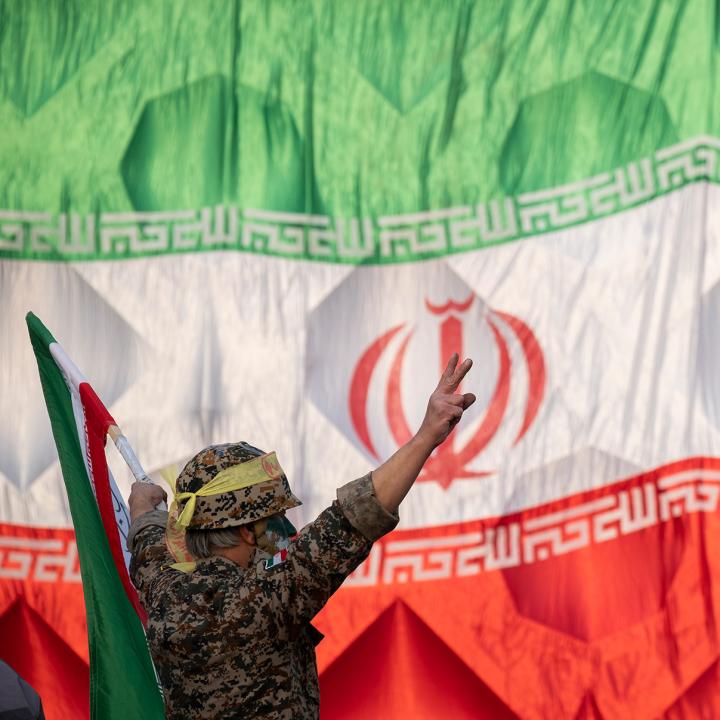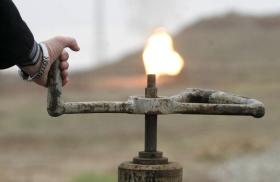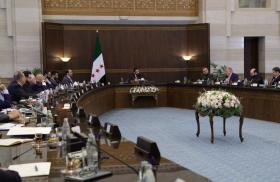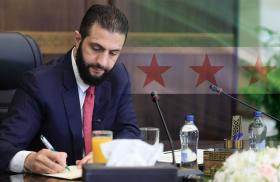
- Policy Analysis
- PolicyWatch 4059
Is the Islamic Republic Starting to Crack? The Signs to Watch

Although the crisis has not yet checked all the boxes that would signal fatal regime vulnerability, the situation could change quickly due to shifting conditions on the battlefield, on the streets, or within the halls of power in Tehran.
Well before President Trump’s June 22 social media post about regime change in Iran, Israel was already entertaining the idea. “The time has come for the Iranian people to unite around its flag and its historic legacy by standing up for your freedom from the evil and oppressive regime,” declared Prime Minister Binyamin Netanyahu in an online video posted soon after Operation Rising Lion began. While he and other Israeli leaders appear focused on a strategy of degrading the Islamic Republic’s military capabilities and nuclear program, they also seem hopeful that these actions might trigger a popular uprising and, ultimately, regime collapse.
This subtext is reflected in the choice of “Rising Lion” as the operation’s name. Besides being officially characterized as a Biblical reference that might resonate with Israelis, the phrase is a known dog whistle for Iranians. The Israel Defense Forces Persian-language account (@IDFFarsi) has featured imagery of a lion and the sun—a combo that has long served as an Iranian national symbol and is prominently featured on flags from before the 1979 revolution. Related calls have also been raised in social media posts made by former Prime Minister Naftali Bennett and former Intelligence Minister Gila Gamliel—who wrote “Next year in a free Iran!” to caption a video about the former Crown Prince Reza Pahlavi two years after hosting him in Israel in April 2023.
Such statements and iconography suggest a messaging strategy aimed directly at the roughly 80 percent of Iranians who oppose the regime (though one might argue that these messages would be much more effective if consistently issued in Persian rather than English). And the message was seemingly further driven home by Israeli strikes in the courtyard of Iran’s main state media building, Basij headquarters, and the entrance to Tehran’s notorious Evin Prison—major symbols of the Islamic Republic’s propaganda arm and repression.
The question is whether Iranians will actually rise up again as they have numerous times in the past, including the 1999 student uprising, the 2009 Green Movement, the mass protests of December 2017-January 2018, the “Bloody November” protests in 2019, and the 2022 “Woman, Life, Freedom” uprising. More important, if they do rise up, is the Islamic Republic so fragile that it might succumb to such a movement, even though the most recent mass anti-establishment uprising did not induce positive change?
When the latest conflict with Israel first erupted, countless videos showed traffic jams stretching for miles as Iranians fled the capital, mostly headed north to the Caspian Sea region. Some wound up abandoning the journey after running out of fuel, only to return to neighborhoods with neither air raid sirens nor purpose-built bomb shelters (authorities have been converting mosques, schools, and metro stations into inadequate shelters since the fighting began). Others never left, either too old to flee, unable to afford the journey, or opposed to running on principle. Trump’s message on June 16 to “evacuate Tehran” evoked further alarm in Iran and the diaspora.
Despite this climate of fear, it is hard to imagine that millions of Iranians—especially in the capital—would take to the streets in protest right now when so many are focused on basic survival. A ceasefire is in effect as of yesterday, but both sides appear to have violated it. What happens once Iranians sense the initial danger from military strikes is over, though? Historically, when mass protests achieve a certain size, their impact on regime stability is a virtual certainty. For example, according to political scientist Erica Chenoweth, peaceful protests that include 3.5 percent of a population—which in Iran’s case would be just over 3 million people out of roughly 90 million—almost always translate into regime collapse. Her research also showed that depending on local circumstances, this outcome was sometimes achieved with protests of lesser magnitude, too.
The idea is that such numbers would engender sympathy among some regime elements to side with the people. Indeed, there is historical precedent for protests in wartime, as seen when the bloody Iran-Iraq War (1980-88) dragged on. Yet that movement was mostly geared toward ending the conflict, not changing the regime. There is also historical precedent for uprisings in the aftermath of war. Following Saddam Hussein’s defeat in the Gulf War, Iraqi Shia and Kurdish populations rose up against his regime in March 1991 but were brutally suppressed, and numerous atrocities were committed.
Some have speculated that a more radical development—such as the targeted killing of Supreme Leader Ali Khamenei—could tilt the balance definitively toward regime change. One unnamed Israeli official recently hinted that this action is “not off limits,” while President Trump claimed that killing Khamenei was not part of his plan—then added “at least not for now.”
Even in that scenario, velayat-e faqih—the doctrine granting the Supreme Leader his authority—has built-in safeguards. Technically, Iran’s eighty-eight-member Assembly of Experts is tasked with appointing a new Supreme Leader when the time comes, though many believe a succession plan is already in place, perhaps involving Khamenei’s son Mojtaba or others. Yet the sudden, unexpected death of the Supreme Leader could still alter the plan by triggering mass anti-regime protests. Alternatively, if the crisis deepens, the assembly could decide to act on its formal role and remove Khamenei—a conversation that some elites are already having, according to a report by the Atlantic. And there is always the possibility of pressuring or convincing him to step aside for the good of the Islamic Republic.
When designing the clerical establishment after the 1979 revolution, the late Ayatollah Ruhollah Khomeini was at pains to prevent a coup by remnants of the shah’s forces. Hence, he granted the Islamic Revolutionary Guard Corps a critical role in protecting the establishment from internal and external threats. The structure of the IRGC and its relationship with the regular army were designed to diffuse power in a way that would complicate any plans to mount a coup. Today, however, the IRGC security establishment has lost many top brass to Israeli attacks, and even their replacements have been killed in many cases. Moreover, unconfirmed reports indicate that Khamenei has transferred some of his authorities to an IRGC council. Meanwhile, the bottom rung of the security ladder—including the Basij and new wartime volunteers—are occupied with setting up security checkpoints in various parts of the country, monitoring any trucks that might be carrying drones, explosives, or other munitions.
All of this suggests that despite internal rot from systemic corruption and deep Israeli infiltration, the Islamic Republic is surviving for now—but that it would become increasingly vulnerable under certain conditions. The most important markers for regime vulnerability include the following, most of which fall under the category of defections:
- If security forces cannot mobilize effectively or, worse, begin to desert their barracks and bases.
- If public divisions emerge among political elites.
- If officials publicly declare their defections (a new Washington Post report alleged that Israel was threatening them to do so).
- If Iranians begin to protest again and security forces refuse to fire at them (either because they believe “the ship is sinking” or because their friends and family members may be among the protesters).
- If ordinary citizens begin storming military and government buildings or carrying out revenge killings.
- If Iranians in major industries like oil go on strike.
- If widespread shortages of food, fuel, or basic goods take hold.
- If senior officials and their families flee to allied countries like Russia. It is hard to imagine Khamenei himself ever leaving, since he would rather die a “martyr.” Moreover, the number of foreign escape routes is quite limited, since there are no publicly known off-ramps in the West for Iranian officials attempting to defect.
None of these signs have materialized yet. Most citizens are holding their breath and waiting to see if the ceasefire is able to hold, or if the conflict escalates further after Iran’s retaliatory strikes against U.S. targets in Qatar. The longer the war lasts—especially if its trajectory evens out and becomes predictable—the greater the chance for regime adaptation and survival.
At the same time, U.S. policymakers should keep in mind that developments in Iran are rapidly changing. They should also heed the lesson of recent events in the Middle East—from the October 7 Hamas attack to the fall of the Assad regime in Syria and beyond—which have demonstrated once again that conventional assumptions often do not carry weight there. As such, officials should prepare for all possibilities—not just a prolonged conflict without an apparent strategy, but also the potential collapse of an authoritarian regime that has wreaked havoc in the region and waged war on its own people for more than four decades.
Holly Dagres is the Libitzky Family Senior Fellow at The Washington Institute and curator of The Iranist newsletter.



